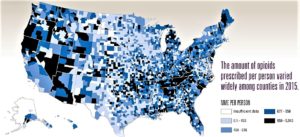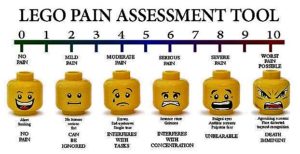- Nevada earns D on nonprofit’s new health-care report card (reviewjournal.com)
A new nonprofit created by heavy hitters from Nevada’s business and medical communities gave the state a D grade on its first report card on the state’s health care system...The report card was released...by the Nevada Medical Center and is intended to focus attention on improving access to quality health care in the state...Larry Matheis, the NMC’s CEO, said the report card will help state leaders focus on the gaps that must be filled to improve Nevada’s medical standing. Currently, he said, the state’s medical system “resembles a series of isolated communities…due to the lack of collaboration among medical professionals and the dearth of thought given to enhancing our community’s reputation.”...The report card’s grades, based on analysis of data supplied by the Centers for Disease Control and Prevention and other government agencies, show how Nevada fares in the categories of health care access, chronic disease, nutrition and activity, mental health and substance abuse. The grades weren’t all bad, with the state receiving a passing “C” grade on chronic disease and a better-than-average “B” on nutrition and activity.
- Opioid prescribing is falling in the US, but not everywhere (philly.com)
Centers for Disease Control and Prevention...Prescriptions per capita, measured in morphine equivalents to account for various strengths and drug types, have declined steadily since their 2010 peak...Half the nation’s counties saw a decline (a quarter were stable) from 2010 to 2015. But there was wide variation, with providers in the highest-prescribing counties writing scripts for six times more opioids per resident than those in the lowest-prescribing counties...Nationally, the epidemic has been driven by high rates of addiction in more rural and white areas...Looking at county-level prescribing data helped CDC researchers to shed more light on some patterns of the painkiller epidemic. Counties with high rates tended to:
- Contain small cities or large towns (perhaps with pharmacies that drew residents from rural areas)
- Have higher percentages of white residents
- Have more dentists and primary-care physicians per capita
- Have more residents who were uninsured or unemployed
- Have more people with diabetes, arthritis, or a disability
But county-by-county analyses also illustrated how much is unknown about where and why opioids are given.
- Limits on doctor-drug rep interactions tied to prescribing changes (reuters.com)
Policies that limit or regulate interactions between doctors and pharmaceutical company representatives may affect what drugs are prescribed to patients, according to a new study...Drugs promoted by pharmaceutical representatives - known as detailed drugs - lost market share after hospitals enacted such policies, while drugs that weren't detailed gained market share...the findings suggest institutions and organizations can play a role in relationships between doctors and the drug industry..."Detailing" visits from drug representatives are one way to educate doctors about new drugs and treatments they would need to learn of elsewhere...those visits are linked to increased use of brand name and costly drugs even when less expensive generic treatments are available...The million dollar question is whether drug detailing and restrictions on detailing are affecting patient outcomes...
- Contentious flu vaccine policies at hospitals are based on flawed research, study says (statnews.com)
It’s an edict that comes out every autumn in many hospitals: If health care workers don’t get a flu shot, they will face consequences. Some make vaccinations a condition of employment. Others require unvaccinated staff to wear surgical masks near patients for weeks during flu season...But a new study is calling into question the scientific evidence underpinning these increasingly common hospital policies — and could fuel challenges to the contentious orders...The study...concludes that the research used to justify mandatory flu shots for health sector workers is flawed, and that the policies cannot plausibly produce the benefits that had widely been assumed...the bottom line of our paper is to say there is no valid scientific evidence, even now, underpinning enforced health care worker immunizations...trying to mandate that health care workers take the flu vaccine is well-intentioned, but is taking away resources and the focus on what our main priority needs to be, which is getting a better influenza vaccine...
- How much would you pay to live pain-free? (washingtonpost.com)
What's the dollar value of pain?...That's the question posed by a team of Icelandic and American economists in a working paper published this week by the National Bureau of Economic Research...how far would we go to avoid pain?...if you're an economist, answering that question is surprisingly difficult. You can't simply flat-out ask people how much they'd pay to avoid pain. Most people aren't used to thinking of their suffering in dollar terms. People who haven't experienced severe or chronic pain are likely to underestimate the value of being pain-free...researchers used a technique that's been used to study the implicit "cost" of a number of different ailments...They analyzed data from over 22,000 Americans over the age of 50 who had taken part in the Health and Retirement Study...As the study's authors put it, you get an implicit answer to this question without having to actually pose it to people: "Consider your overall satisfaction with life being often troubled by pain, what would you be willing to pay to be just as happy but without pain?"...The answer: between $56 and $145. A day. Which works out to between $20,000 and $53,000 a year. Recall that the median household income is about $56,000, and the trade-off becomes stark: Some people would theoretically be willing to give up their entire livelihoods to be pain-free.
- It’s time to make it legal for Americans to order prescription drugs from abroad (statnews.com)
Every day, countless people across America order prescription drugs from pharmacies in other countries as they hunt for something increasingly elusive — affordable medications...Under most circumstances, importing medicines is illegal...And it is time to scrap this prohibition, unless Congress finds another way to drive down drug costs...Sixty percent of Americans say lower drug costs should be a top priority, and a whopping 72 percent support the idea of importing medicines from Canada, according to a recent Kaiser Family Foundation poll...8 percent of adults surveyed reported that they or someone in their household have already bought prescription drugs from outside the U.S...Meanwhile, the cost of 20 widely used drugs is three times cheaper in Canadian than in New York pharmacies...
- In the debate over rising drug prices, both drugmakers and PBMs claim innocence (cnbc.com)
The battle over rising drug prices has become a full-blown he-said-she-said...Drug companies have pointed the finger at middlemen in the health-care system, saying they not only benefit from rising drug prices but contribute to their increases...Those middlemen — namely, pharmacy benefits managers (or PBMs) — have said the only parties responsible for drugs' list prices are the manufacturers...So who's right?...In a study released today, the PBM lobbying group, the Pharmaceutical Care Management Association, says an analysis it commissioned revealed no correlation between drug prices and rebates paid back to PBMs...The drug industry's lobby, the Pharmaceutical Research and Manufacturers of America...disagrees...
- Availability and Variation of Publicly Reported Prescription Drug Prices (ajmc.com)
Retail prices for commonly prescribed drugs are often absent from state prescription drug price websites, but when reported, can vary substantially...Objectives: To examine how often retail prices for prescription drugs are available on state public reporting websites, the variability of these reported prices, and zip code characteristics associated with greater price variation...Takeaway Points: Across state government websites reporting retail prices for medications commonly prescribed for chronic conditions, price information is often deficient. However, when retail prices for prescription medications are publicly reported, these prices vary significantly.
- This is the first study to document variation in publicly reported retail prices for prescription medications across different classes and different states.
- More consistent reporting of such prices could potentially yield substantial savings for consumers who face high out-of-pocket expenditures.
- Policy makers should work to ensure retail prices for prescription drugs are reported consistently and strive to develop new strategies to facilitate consumers’ use of this information.
- Drugs approved with limited data aren’t always well-tested later (reuters.com)
New medicines that win U.S. marketing approval without conclusive evidence of their effectiveness aren't always proven to work after they go on sale, a recent research review suggests...Researchers focused on medicines approved for sale based on single pivotal trials or based on what's known as "surrogate markers," such as lab tests and signs of risk for disease such as cholesterol levels instead of true clinical outcomes like heart attacks or deaths. Many times no follow-up studies were published after these medicines went on sale, and when studies were published they often continued to rely on surrogate markers to suggest potential effectiveness...speeding up the approval process increases our collective uncertainty about drugs' benefits and safety...This exposes patients to risks - the risk that they are spending their resources on therapies that do not work as well as expected as well as the possibility that they are taking drugs that have underlying safety risks that have not yet been figured out… researchers examined published studies of 117 medicines approved for treating 123 medical conditions by the U.S. Food and Drug Administration...based on either a single pivotal trial or on trials that relied on surrogate endpoints...no follow-up studies were published for 43 of the 123 approved indications, or 35 percent...
- Analysis: Reports of drug side effects increase fivefold in 12 years (jsonline.com)
For years, the FDA’s adverse events system has been derided because of its largely voluntary nature — only drug companies, not doctors or patients, are required to report problems. As a result, the system likely only was capturing a small percentage of cases...In recent years, the number of reports filed has been multiplying, prompting more independent researchers and drug companies to use the data as a way to detect safety problems...The surge in reports could indicate a growing number of harmed patients or more vigilant reporting of adverse events, a goal of the FDA. Experts say both likely play a role...Twelve years ago, there were 206,000 reports of side effects from medications filed with the FDA — complaints as frivolous as flatulence, as serious as death...By 2015, the most recent full year of data, the number had grown to 1.2 million...










